I used to think all livestock trailers were basically the same.
Then I tried hauling sheep in a trailer meant for horses.
Let’s just say… it didn’t go well.
If you’ve ever stared at rows of trailers and wondered what makes them different, this article is for you. I’ve hauled through heat, storms, and busted backroads. I’ve made the mistakes and learned what matters.
In this guide, I’ll walk you through 7 types of livestock trailers. You’ll learn which one matches your needs, your terrain, and your animals.
Let’s get started!
Livestock Trailer Comparison Table
Not sure where to start? Here’s a quick side-by-side comparison to help you get a feel for how each trailer stacks up before we dig into the details that matter most.
| Trailer Type | Animal Position | Best For | Key Benefits | Limitations | Loading Style | Extra Notes |
| Gooseneck Trailer | Varies | Large herds, long trips | Stable, high capacity, better control | Needs pickup with bed hitch | Rear | Great for rough terrain and heavy loads |
| Bumper Pull Trailer | Varies | Small farms, local hauls | Easy to hitch, works with small trucks | Less stable, lower weight capacity | Rear | Best for short distances and new haulers |
| Stock Trailer | Varies | Mixed animals, all-purpose farms | Flexible, simple design, budget-friendly | Fewer comfort features | Rear or Side | Can be open or enclosed, add dividers if needed |
| Horse Trailer | Forward or angled | Horses, show animals | Ventilated, padded, horse-safe | May not fit other livestock | Rear or Side | Often has tack storage |
| Double-Deck Trailer | Horizontal, 2 levels | Pigs, sheep, goats | Max volume per trip, fuel-saving | Height laws, not legal for horses | Hydraulic Ramps | Watch ventilation and local transport laws |
| Slant Load Trailer | Angled | Horse hauling, shorter trips | More horses in less space, easy loading | Harder to access front horse | Rear or Side | Some horses dislike the slant position |
| Straight Load Trailer | Straight, side-by-side | 1–2 horses, beginner owners | Good for nervous horses, balanced load | Less efficient space use | Rear | Easier for some horses to enter and exit |
You’ve seen the side-by-side. Let’s move ahead and unpack what each trailer really offers for your livestock needs.
1. Gooseneck Trailers
A gooseneck trailer is built for heavier loads and longer trips.
It connects to a hitch in the bed of a pickup truck right over the rear axle. This hitching point gives better balance and control compared to bumper pull trailers, which attach behind the vehicle. The name comes from the long, curved neck of the trailer that stretches over the truck bed, like a goose.
Some call it the workhorse of livestock transport.
One of our long-time clients, a cattle operator from Inner Mongolia, shared what finally pushed him to upgrade. He was hauling ten head with a bumper pull during high winds. Halfway through, the trailer started swaying so badly he had to pull over. It wasn’t overloaded. It just wasn’t built for that kind of trip.
After switching to a gooseneck, he said the difference was immediate. Smoother drive. Less stress on the animals. And no more white-knuckle steering on open roads.
Key Advantages
- More stability on highways and uneven roads
- Handles heavier livestock like cattle or large horses
- Better for long distances and frequent hauling
- Tighter turning radius, especially in job sites or narrow access roads
Important Consideration
- Requires a pickup with a bed-mounted hitch
- Not compatible with small trucks or SUVs
- Typically heavier and longer than bumper pull options
Also, trailers over 10,000 lbs may be classified as commercial under U.S. DOT regulations (FMCSA, 49 CFR Part 390), which could require special licensing or logbooks.
Best For
- Large herds
- Commercial haulers
- Anyone moving livestock across rough terrain or long distances
For livestock operations that need hauling power, the gooseneck trailer is often the most reliable choice. It’s built to handle more and handle it better.
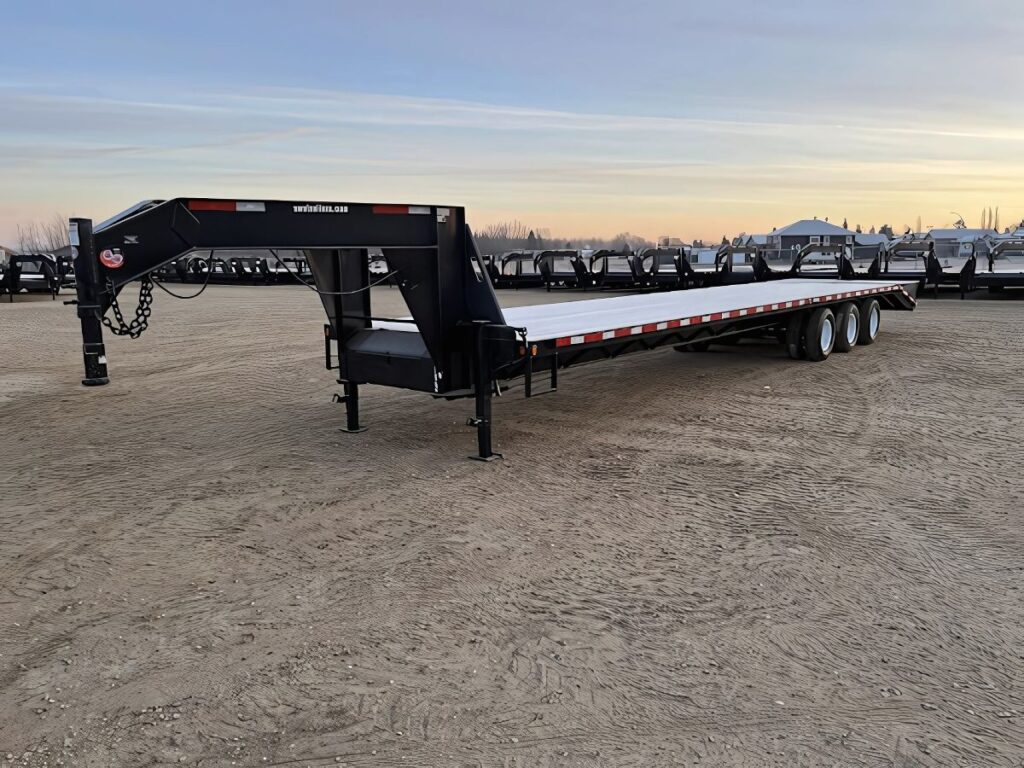
2. Bumper Pull Trailers
A bumper pull trailer connects to a hitch located under the rear bumper of a towing vehicle.
That could be a truck, an SUV, or even a van with the right setup. It’s the most common type of livestock trailer and often the first kind new buyers look at. Simple to hook up. Easy to move. And cheaper than a gooseneck.
One small goat farmer from Shandong told us she chose a bumper pull because it was the only trailer she could haul with her midsize SUV. She didn’t move animals often just between two properties. For that, it worked perfectly. Short trips. Light loads. No steep roads or tight deadlines.
Key Advantages
- Easy hitching, no need to climb into the truck bed
- Compatible with smaller vehicles
- Good for local hauling or short distances
- Often more affordable up front
If the livestock are small like goats, pigs, or sheep, this trailer can get the job done.
But there are trade-offs.
Bumper pull trailers don’t handle heavy loads well. At higher speeds, or in strong winds, they can sway. They also put more strain on the rear axle of the vehicle. And while they’re great for parking in tight spots, they can feel unsteady on the highway.
Best For
- Small farms
- Weekend or seasonal hauling
- New or budget-conscious buyers
- Light livestock like sheep, goats, pigs, or small calves
For farmers who don’t need to move animals far or often a bumper pull trailer offers flexibility without the need for a large towing vehicle.
It’s a simple option that works well, as long as the load stays light and the road stays close.
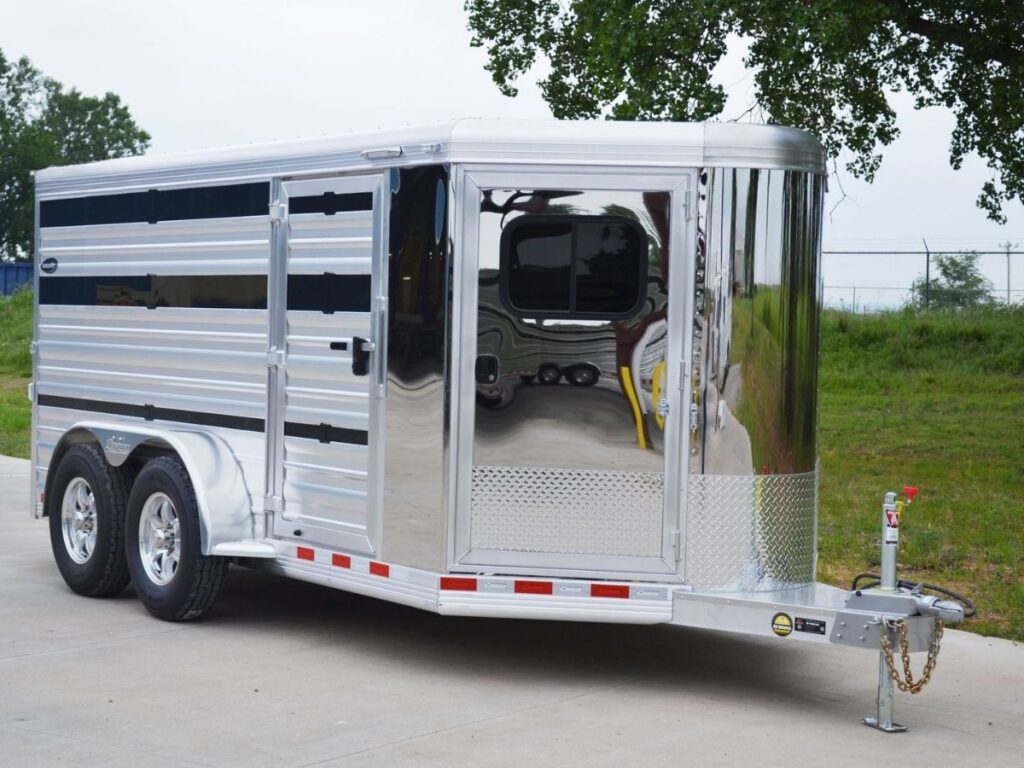
3. Stock Trailers
Not every farm hauls just one kind of animal. Some have goats. Others raise sheep and pigs. And some farms rotate animals throughout the year.
If that sounds familiar, a stock trailer might be what you’re looking for.
A stock trailer is a general-purpose trailer made for moving different types of livestock. You’ll see them with either open sides or fully enclosed bodies. They don’t come with fancy partitions or storage areas. That’s part of what makes them simple and easy to use.
One of our clients, a small-scale farmer outside Gansu, told us she bought her first stock trailer when she needed to move pigs and sheep between two locations. She didn’t need anything high-end—just something that was easy to load, easy to clean, and didn’t break the bank. That trailer did everything she asked for.
Let’s look at why stock trailers are such a popular choice.
Key Advantages
- Can haul different types of animals without switching trailers
- Often more affordable than specialty models
- Interior is simple, with no permanent dividers or tack rooms
- Great for general farm use, even beyond livestock
Before choosing a trailer, it helps to ask: How many animals will you be moving? And what kind?
If the answer changes depending on the day or the season, flexibility matters. That’s where stock trailers stand out.
Best For
- Farms with mixed livestock
- Budget-conscious operations
- Hauling over short to medium distances
- Tasks beyond animals, like hauling feed or gear
But even a basic stock trailer comes with choices. Let’s talk about what you can add to make it work better for your setup.
Add-Ons and Custom Options
Some farmers add internal dividers to separate animals. Others install ventilation systems for hot weather. These features are optional but can make a big difference in animal safety and comfort.
If you haul in different seasons or across long distances, good airflow and layout can make or break your trip.
Open vs Enclosed Stock Trailers
Here’s where things split.
- Open stock trailers: These have slatted or partial sides. They allow air to flow, which is great in warm weather. But animals are more exposed to wind, rain, and road noise.
- Enclosed stock trailers: These keep animals protected from the elements. However, they can get stuffy inside without proper ventilation.
Which one works better for you depends on your climate, animals, and trip length.
Floor Material Options
The floor is one of the most used and most abused parts of any livestock trailer. Here’s what most buyers choose:
- Wood: Affordable and provides grip. But it can rot if not maintained.
- Rubber mats: Offer good traction and comfort. They also help reduce noise and vibration.
- Metal: Tough and easy to wash out. But it can get slippery unless it’s textured or covered.
Think about your cleaning habits and local weather before picking a floor.
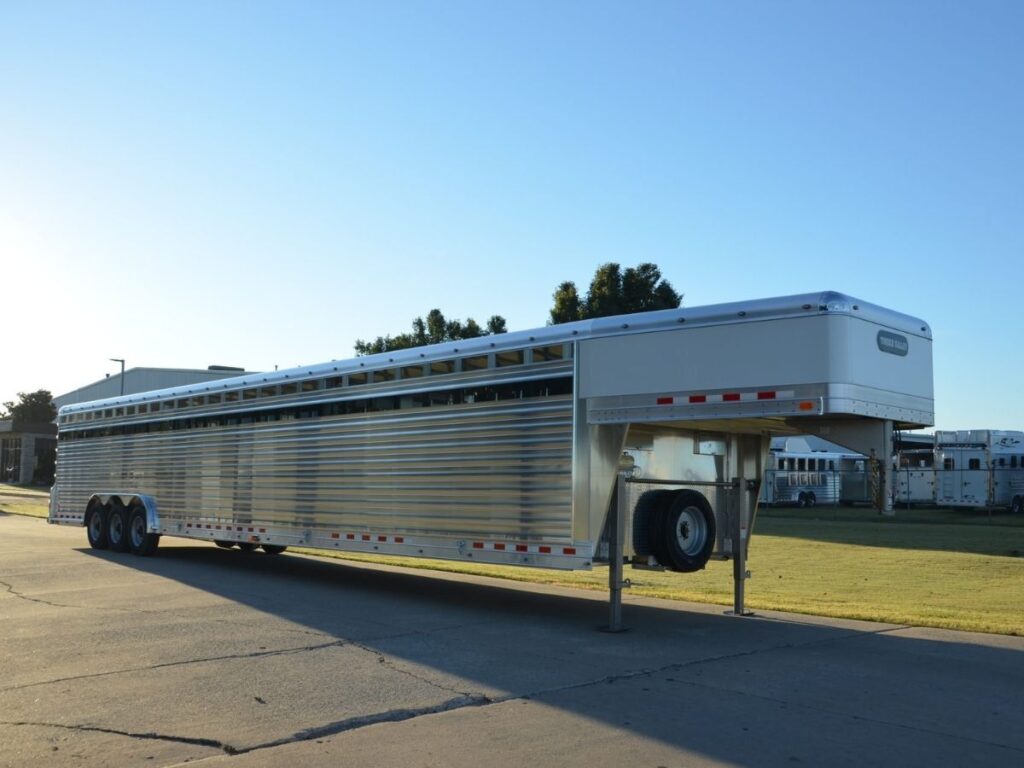
4. Horse Trailers
If you’ve ever tried to haul horses using a general livestock trailer, you know it’s not ideal.
Horses move differently. They spook easily, and they need more headroom and stability than other animals. That’s why horse trailers are made specifically for them. Every detail from the walls to the floor is designed with comfort and safety in mind.
So what makes a horse trailer different?
Let’s walk through it together.
Key Advantages
Horse trailers are built with the needs of the animal first.
Most come with:
- Padded dividers to keep horses separate and prevent injury
- Ventilation systems to maintain airflow and avoid overheating
- Side or rear ramps to make loading smoother, especially for nervous horses
If you’re hauling long-distance or taking horses to shows, these features really matter. One of our clients, a show horse owner in Henan, once said she’d never go back to using a stock trailer. After a long haul left one of her mares sore and sweaty, she invested in a proper horse trailer. Since then, every trip has been calmer, and her horses recover faster.
Now, once you know what goes into a horse trailer, the next question is: What layout should you choose?
Straight-Load vs Slant-Load Trailers
There are two main ways horses stand inside a trailer: straight or slanted.
Straight-load trailers
- Horses stand side by side, facing forward
- Easier to monitor each horse during travel
- Often better for tall or long horses
- Can be longer overall, depending on capacity
Slant-load trailers
- Horses stand at an angle to the direction of travel
- Allows more horses in a shorter trailer
- Often easier to load for nervous animals
- Less direct access to individual horses
Some horse owners swear by straight-load for comfort and visibility. Others like the space-saving setup of slant-load trailers. Think about your horse’s size, behavior, and how often you’ll be on the road.
Tack and Storage Space
Most horse trailers come with space for tack. Tack means saddles, bridles, grooming gear, and anything else you might need on the trip.
This extra space can be in a front tack room or a rear compartment. Either way, it’s a big help when you’re traveling to shows or clinics and don’t want to haul extra gear separately.
Some trailers even include a dressing room or place to store hay and feed.
If you’re doing long trips or staying overnight, these features aren’t just convenient—they’re necessary.
Safety and Regulations
Transporting horses comes with legal responsibilities, too.
In the United States, trailers over 10,000 pounds may fall under DOT regulations (FMCSA, 49 CFR Part 390). That can mean driver logs, inspections, or special endorsements depending on the state.
There are also guidelines from the USDA about animal welfare during transport. That includes having enough space, proper ventilation, and safe loading systems to reduce stress and injury.
You don’t want to get pulled over halfway through a trip and find out your trailer doesn’t meet requirements. It’s always better to check local and federal rules before you haul.
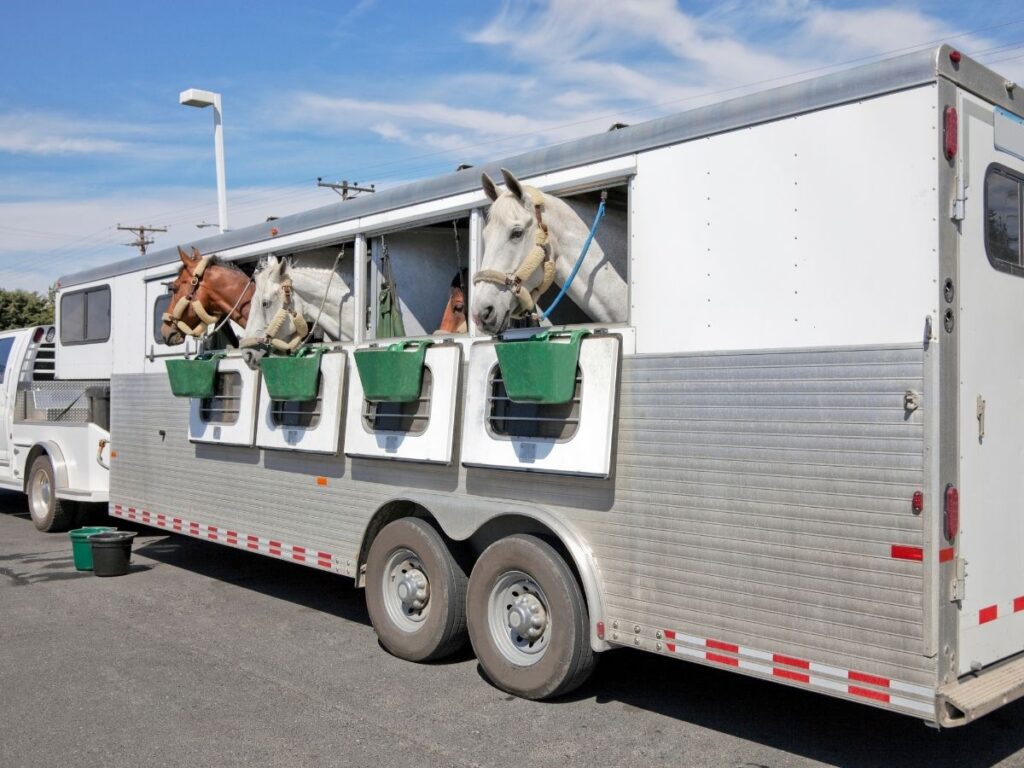
5. Double-Deck Trailers
If you’re moving a high volume of livestock, you’ve probably thought: Is there a way to cut down on trips without overloading the trailer?
That’s exactly why double-deck trailers exist. These trailers are built with two internal levels, allowing you to carry twice the number of animals in a single haul. For commercial operations or large-scale farms, that extra capacity can make a big difference.
Key Advantages
Let’s start with the obvious: more space equals more animals.
But the benefits go beyond that.
- You make fewer trips, which cuts down on fuel.
- You spend less time on the road, which can ease scheduling.
- You reduce wear and tear on your equipment and team.
A logistics manager we worked with in southern China told us how switching to double-deck trailers reduced his weekly livestock runs by nearly 30 percent. For him, the time saved was just as valuable as the fuel savings.
Best For
This type of trailer is a good fit if you’re moving:
- Pigs
- Sheep
- Goats
- Or any other small-bodied livestock
Because of their size, these animals fit comfortably on both levels without feeling cramped.
Safety and Regulations
Now, before you start shopping, there’s something you need to know.
Height regulations vary depending on where you’re located. In many parts of the U.S., the maximum trailer height allowed is around 13.5 feet. If your trailer is taller, you may be restricted from using certain roads or require permits.
Also, not all animals can legally be transported in a double-deck setup. For example, horses are not allowed in double-deck trailers under the Horse Transportation Safety Act in the United States, due to injury risks during loading and transit.
It’s smart to check both federal and local laws before committing to this type of trailer.
How Loading and Unloading Works
Double-deck trailers aren’t just tall versions of regular trailers. They come with special systems that make it easier and safer to load animals on both levels.
Look for:
- Hydraulic ramps that raise or lower between decks
- Swing gates to help control animal movement
- Non-slip flooring to reduce the chance of injury
If you’ve ever tried moving pigs up a steep ramp, you know how stubborn and unpredictable they can be. A client in Guangxi told us his hydraulic ramp paid for itself in reduced injuries, both for his pigs and his workers.
Airflow and Comfort
Packing animals into two levels makes ventilation even more important.
Without fresh air, heat and ammonia can build up fast. This leads to stress, respiratory issues, and in the worst cases, animal loss.
That’s why many regions require specific ventilation standards. For example, trailers in the European Union must meet rules on air exchange, space per animal, and rest times during long journeys. If you’re in the U.S., refer to the USDA’s Livestock Transportation Guidelines for similar standards.
Double-deck trailers offer clear benefits, but they come with more responsibility too.
If you’re moving small animals in bulk and want to save time and fuel, this might be the trailer that fits your operation. Just make sure it also fits the animals, and the law.
The wrong trailer can cost you more than money.
That’s why we design each trailer at Rhinotrail to fit your exact needs. From reefer trailers to low-beds, every build starts with your real-world challenges.
Let’s talk about your next trailer.
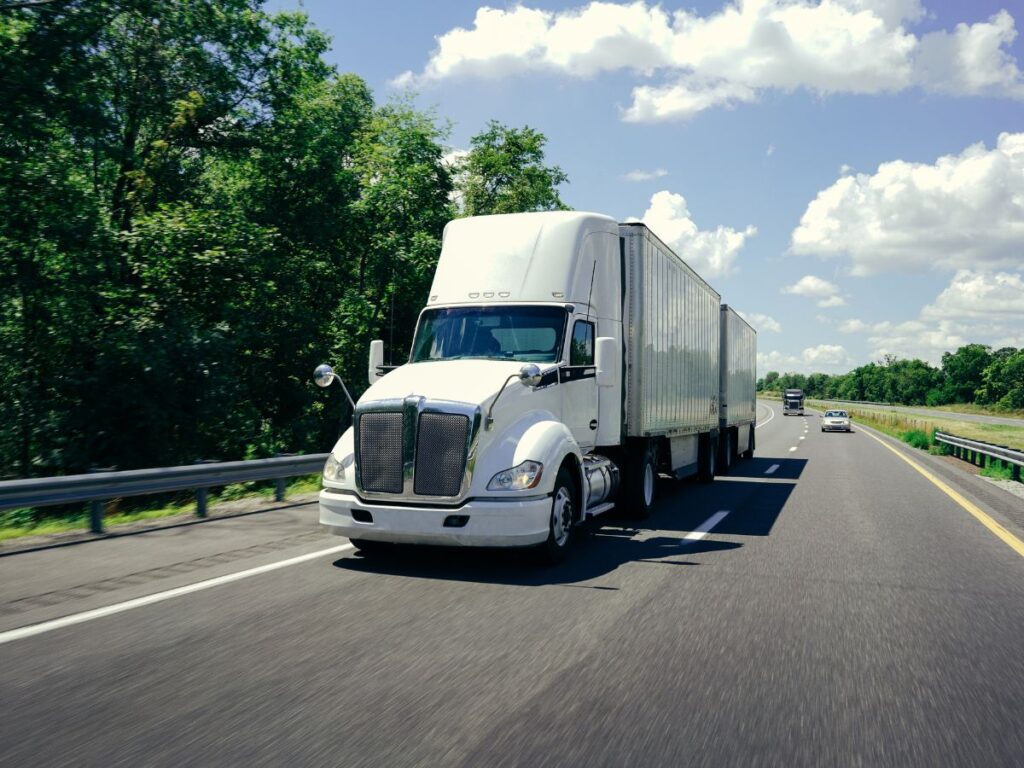
6. Slant Load Trailers
Every horse has a different personality. Some load easily. Others hesitate. And the way a trailer is designed can make all the difference.
That’s where slant load trailers come in. These are built with stalls that run at an angle. Horses stand facing the side of the trailer, not straight ahead like in a straight-load setup. This small shift in layout changes how horses enter, ride, and exit.
If you’ve ever struggled with a nervous loader or needed to move more horses without buying a longer trailer, this option might catch your interest.
Key Advantages
The angled stalls in a slant load trailer make better use of the trailer’s length.
That means:
- You can fit more horses in a shorter trailer
- Loading feels easier because the entry angle is more natural
- The trailer often includes extra space for tack or feed storage
One breeder in Shaanxi told us how their older gelding refused to load in a straight-load. But once they switched to a slant-load, the same horse walked in without hesitation. Sometimes, that shift in angle makes all the difference for animals who are easily spooked.
Best For
This kind of trailer tends to work well for:
- Horse owners who travel short to medium distances
- Farms or stables that need to haul more horses without adding length
- Horses that get nervous during loading or backing out
If you’re hauling regularly but not across country, this setup often balances comfort and convenience.
Rear vs Side Loading Options
Before buying, you’ll need to choose how your horses will get in and out.
Most slant load trailers offer rear loading, where horses walk up a wide ramp or step into the back of the trailer. This gives you more space during loading.
Some models include a side ramp, which lets horses walk on from one end and off from another. This is especially useful for horses that don’t like backing out. It also helps handlers stay safe, since there’s no need to squeeze between horses to get one out.
Thinking about how your horses behave in tight spaces will help you pick the right configuration.
What to Watch Out For
Even with all the perks, slant load trailers aren’t perfect.
Some horses don’t like standing at an angle. A study published in Applied Animal Behaviour Science found that horses transported diagonally may shift more in certain road conditions. You’ll want to watch how your horses behave on shorter trips first.
Also, space can be tight for large breeds. If you haul draft horses or taller warmbloods, angled stalls might not give them enough head or leg room. And in most slant load designs, getting to the front horse means unloading the ones behind it first. That can be inconvenient at shows or stops along the way.
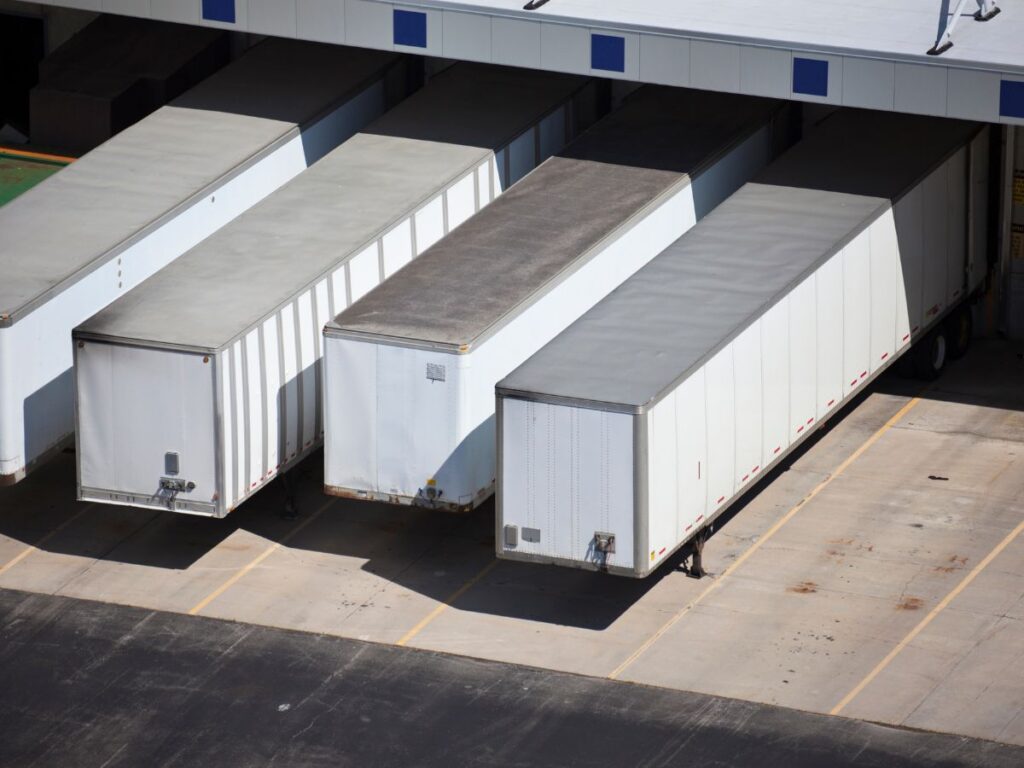
7. Straight Load Trailers
Not every horse feels comfortable loading into a slanted stall.
Some like to see where they’re going. Others feel more secure standing straight and side by side with a companion. That’s where straight load trailers come in.
In this design, horses enter from the back and stand facing forward, shoulder to shoulder. It’s a familiar setup for many owners, especially those transporting one or two horses at a time.
Key Advantages
This trailer design offers a few strong benefits:
- Works well for first-time haulers or anxious horses
- Provides even weight distribution, which helps with towing stability
- Often has simple construction, making it easier to maintain and clean
Now, let’s talk about when this option makes sense.
Best For
Straight load trailers are often a good fit for:
- Horse owners who transport 1 to 2 horses at a time
- New trailer owners who want something easy to operate
- Short- to mid-range trips, especially with familiar horses
If you mainly haul to local shows or vet visits, a straight load might give you everything you need.
What to Watch Out For
Like any trailer, straight loads come with trade-offs. Let’s go over a few points you should think about.
- Space vs Comfort: To give horses enough room to stand forward-facing, these trailers are often longer than slant-load designs with the same capacity. That can make maneuvering in tight spaces more difficult.
- Ramp Design and Ease of Use: Make sure the ramp isn’t too steep. A shallow angle, rubber matting, and side rails make loading and unloading safer. Some trailers also offer step-up access, but that might not work well for all horses.
- Storage Capacity: Some straight load trailers include a front tack room, while others don’t. If you’re hauling gear like saddles, bridles, or feed, double-check that you’ll have space for it.
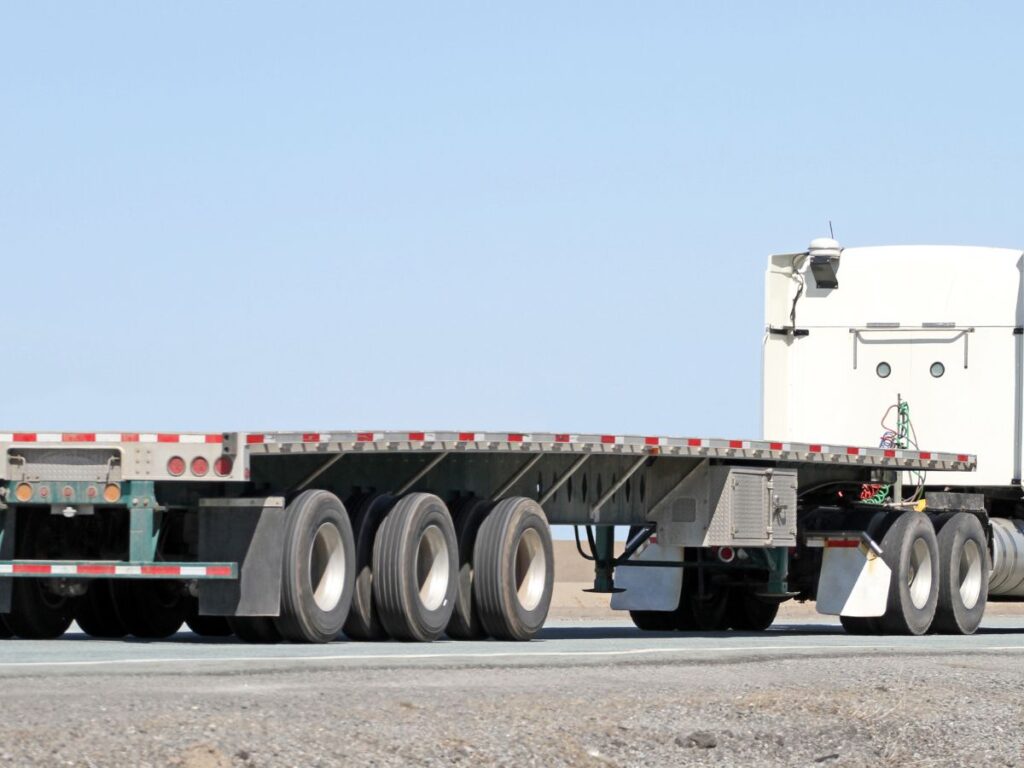
Conclusion
Choosing a trailer is about safety, comfort, and peace of mind for you and your animals.
Now you’ve got the info. Use it, read through the types again and picture your routes, livestock, and truck.
Then ask yourself: What do you really need?
Don’t wait for the wrong trailer to teach you the hard way.
Contact us today and we’ll help you make the smart call.
Which trailer type feels right for your next haul?


